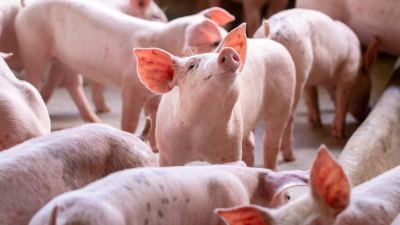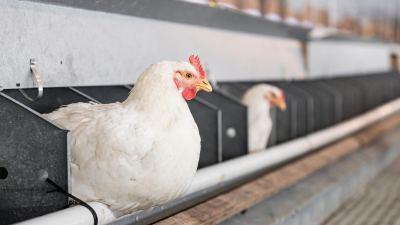Harnessing the microbiome to enhance poultry health and food safety

Gut health and its management is an intricate and complex area governed by numerous factors, including nutrition, microbiology, immunology and physiology. When gastrointestinal health is compromised, nutrient digestion and absorption are affected, feed conversion becomes reduced, and susceptibility to disease is heightened, ultimately resulting in a negative economic impact.
Understanding the animal’s microbiome
The community of microorganisms in the gut is referred to as the “microbiome” and is recognised as a very diverse community of bacteria, fungi, protozoa and viruses. Its diversity varies along the different regions of the gastrointestinal (GI) tract, with some regions having less tolerable conditions and containing reduced microbial diversity in comparison to regions more favorable to microbial growth.
The gastrointestinal microbiome plays a vital role in nutritional, physiological and immune functions. Poor intestinal health is associated with increased pathogen colonization and susceptibility to infectious disease, and it leads ultimately to poor weight gain and increased mortalities.
Within the GI tract, there are multiple interactions between the host, intestinal environment and microbial cells, in addition to feed components. These interactions underline the critical role of the microbiota in the health and well-being of the host, although the exact manner in which this is achieved is not yet fully understood.
The role of microfloral diversity in reducing pathogens in chicken
The diversity of the microbiome plays a critical role in gut health, with beneficial microbes forming a protective barrier lining the gut. This barrier prevents the growth of pathogenic bacteria such as Salmonella, Campylobacter, Clostridia and Escherichia, among others.
There are numerous theories on how the beneficial microbes prevent pathogen colonization. Some suggest that potential attachment sites on the gut cells become occupied, thereby reducing the opportunity for attachment and colonization by pathogens. Another proposed mechanism is that the intestinal microbiota secrete compounds such as volatile fatty acids, organic acids and natural antimicrobials that either inhibit the growth of, or make the environment unsuitable for, less favorable bacteria.
Recent research has demonstrated that increased intestinal microfloral diversity correlates with increased resistance to pathogen colonization. In essence, the greater the diversity of microbes within the GI tract, the lower the risk of pathogen colonization.
By enhancing overall microfloral diversity, it is possible to reduce the abundance of pathogens, including those that impact host health as well as those associated with food safety.
Dietary supplements, which focus on enhancing and optimizing gut microfloral diversity to aid intestinal health and decrease the animal’s susceptibility to disease, can be broadly classed as either prebiotics or probiotics. Over the past number of years, a focus has been placed on identifying how nutrition can benefit the gastrointestinal microflora. In particular, there has been an emphasis on understanding how enhancing microbial diversity influences health and performance.
Ultimately, the goal with nutritional intervention is not only to control pathogens detrimental to host health, but also to reduce the transmission of pathogens through the food chain.
Utilizing prebiotic mannan-rich fraction to enhance microfloral diversity
From a nutritional standpoint, many feed supplements are focused on stabilizing the gut microflora to aid intestinal health and decrease the animal’s susceptibility to disease.
Of the functional ingredients currently in use for microbial control, mannan-rich fractions (MRFs) isolated from the yeast cell wall are widely used in animal nutrition and have been shown to improve animal performance in a manner that suggests they are a viable non-antibiotic alternative.
MRF products, most of which are derived from the cell wall of the yeast Saccharomyces cerevisiae, have been commercially available since the early 1990s. Since 1999, their use in animal feed has become more prominent, mainly due to the European ban on prophylactic antibiotic growth promoters in animal feed. Given their ability to bind to and limit GI tract colonization by gut pathogens, MRFs have proven to be an effective solution for antibiotic-free diets as well as providing support for immunity and digestion.
The effects of MRF supplementation on health and performance have been studied comprehensively, and they show that MRFs have proven effective at improving weight gain and feed conversion efficiencies as well.
Newer studies have focused on the effects of MRFs on the overall bacterial community of the gut — not just on specific bacteria — and such work has shown that supplementation with MRF can significantly enhance the diversity of the intestinal microflora. These studies have also demonstrated that such changes in diversity are associated with decreased abundance of food safety pathogens such as Salmonella, Campylobacter and E. coli.
Conclusions
The challenges of modern production practices can restrict the diversity of the gastrointestinal microflora, in some instances resulting in an unhealthy imbalance that can lead to the development of a vicious cycle of pathogen colonization and recolonization. By improving the overall microbial diversity within the gut, we can aim to optimise gut microflora, thereby enhancing resistance to pathogen colonization and reducing the abundance of microbes detrimental to food safety.
Improving our understanding of how changes in the composition of the bacterial community in the GI tract might contribute to host health and performance is critical. However, it is only through looking at this composition of the bacterial community as a whole, rather than looking at specific beneficial or detrimental bacterial species, that we can begin to understand the specific and reproducible effects of nutrition on the microbiome.
About the author:
Dr. Richard Murphy is the research director at the Alltech European Bioscience Centre in Dunboyne, Ireland. He earned a bachelor’s degree in biochemistry in 1994 from the National University of Ireland, Galway. Subsequently, he earned a research scholarship from Alltech and his doctorate in the Department of Biochemistry at the National University of Ireland, Galway in 1999.
Dr. Murphy maintains strong links with numerous universities and research institutions and has been appointed as an adjunct professor on the faculty of science and health studies at Dublin City University. He has also served as an external examiner for undergraduate degree programs and sits on the board of management of the National Institute for Cellular Biology at Dublin City University.
His current research activities are diverse and include peptide biomarker detection, molecular fingerprinting of microbial populations, antimicrobial resistance, biogas production and transcriptional control, and regulation of protein production.
















